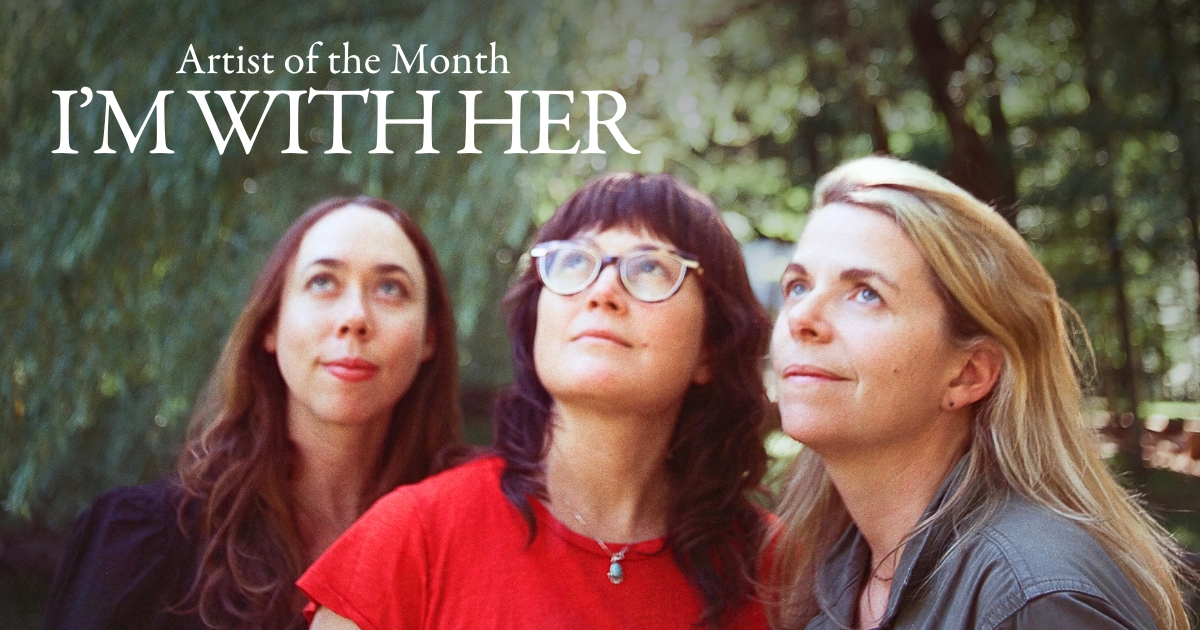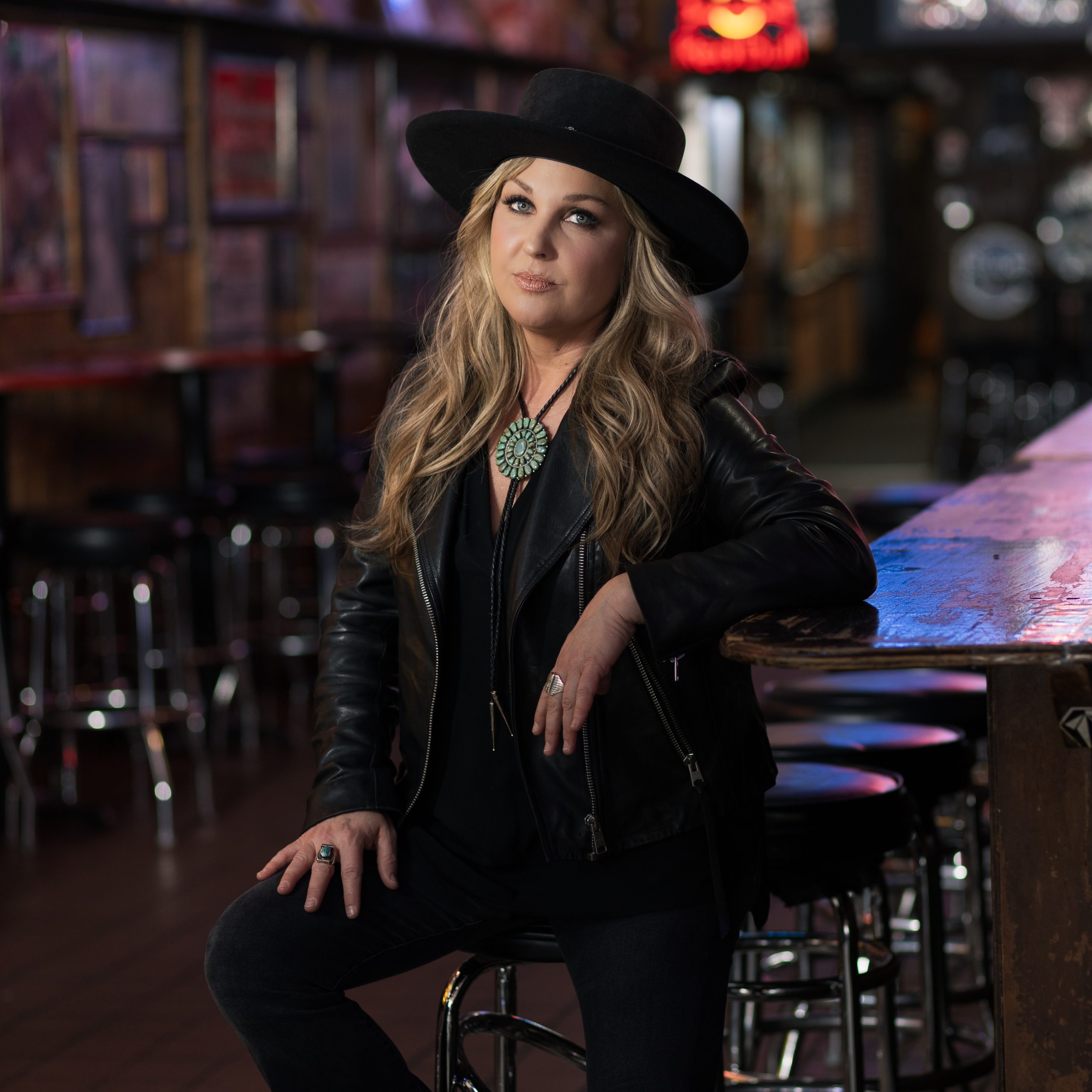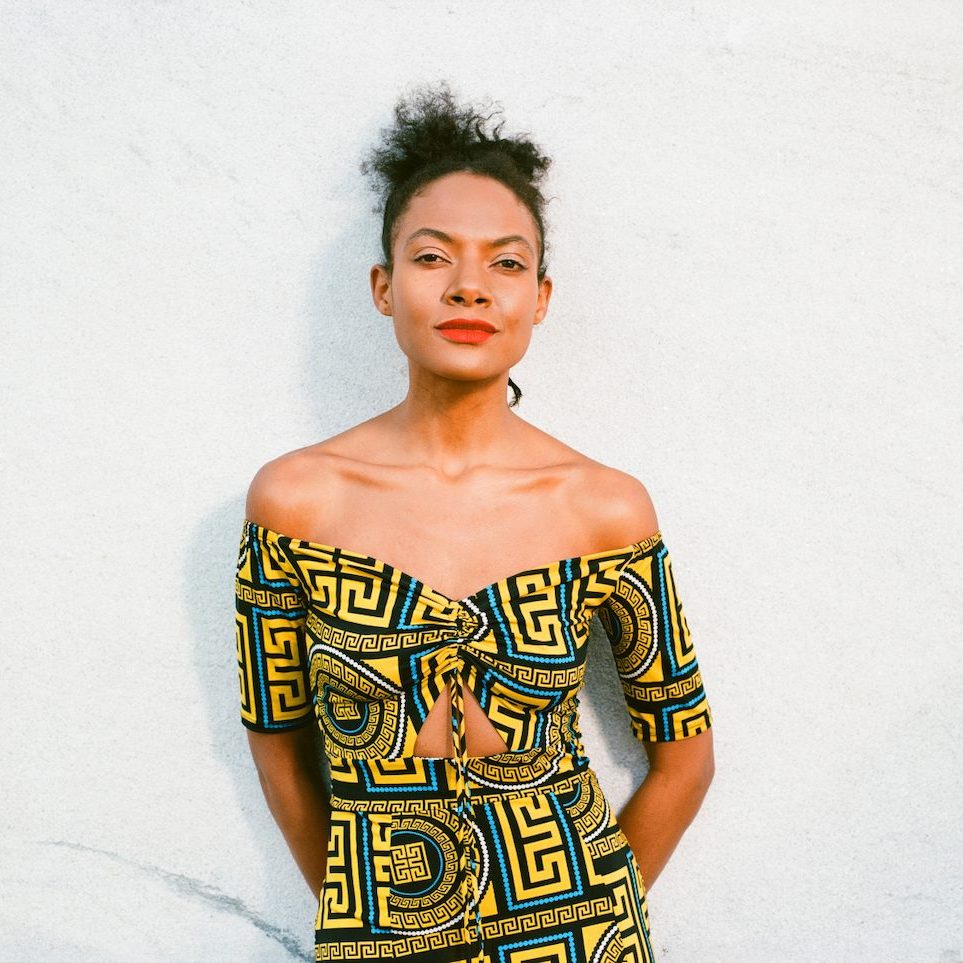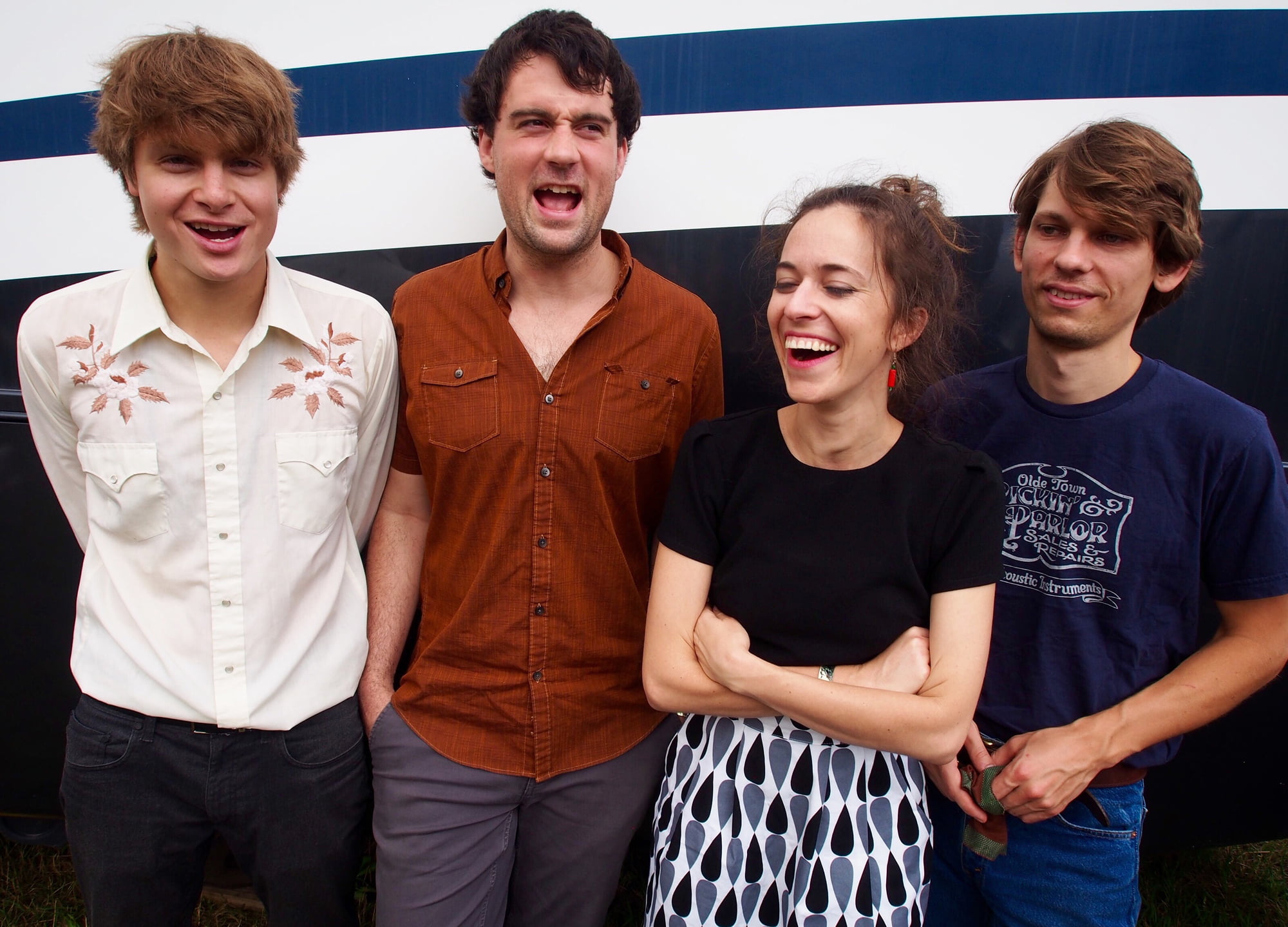More than eight years since the February 2017 release of their acclaimed debut album See You Around, Aoife O’Donovan, Sarah Jarosz, and Sara Watkins have come back together with an abundance of history, both individual and shared, on which to reflect as they began to craft I’m With Her‘s second full length album, Wild and Clear and Blue.
The three multi-instrumentalists and songwriters are beloved in folk and bluegrass circles and known cumulatively for a treasure trove of work as solo artists, in ensembles, and as co-writers and producers. Internationally renowned live performers, they were most recently celebrated under their collaborative moniker as part of the 62nd GRAMMY Awards, when their original single, “Call My Name,” was awarded Best American Roots Song. This accolade alone showed just how creatively in sync these women continued to be, even as time marched forward and each turned their focuses toward individual projects and significant personal life changes – marriage, next generations, moving homes, passing on of family – all while discerning unique perspectives about the broader transformations of society around them.
Once they felt the spark to start a second album, finally reuniting in 2024 to write and record, the embers of Wild and Clear and Blue grew not only from Watkins, Jarosz and O’Donovan’s pool of collectively evolved musicianship and artistry, but from their sharing of experiences and emotions as they cheered each other on from afar. The candid nature of the trio fully reuniting opened new paths of empathy and resonance between them – paths which go beyond their stunning musical chemistry and into a deeper space of what Jarosz earnestly calls “chosen family.” The songs tell assorted stories, nodding to the familial bonds and identities the three women hold dear in their respective lives but as a unified album, Wild and Clear and Blue is also an eloquent expression of the profound appreciation O’Donovan, Jarosz, and Watkins have for each other, as well as for the support and understanding they have realized and embraced in their ever-evolving bond.
Continuing our Artist of the Month coverage, O’Donovan, Jarosz, and Watkins spoke with BGS about the organic spirit of creativity built into Wild and Clear and Blue, how the preciousness of different relationships in their lives is embodied in the music, the one-of-a-kind nuances that make the experience of listening to the album especially distinct, and more.
You mention the album providing a focus on “connecting with your past and figuring out what you want for your future.” How did each of you decide what parts of your past you felt most inclined to explore and what feels most important to you going into the future?
Sara Watkins: When we came together to write the album, there was a time of just reconnecting. We haven’t seen each other or really been with each other for a couple of years and we wanted to reconnect in a way, [asking ourselves] “Who are we now?” You know, now that we’ve all gone through so much since our last record. A lot of things that we were talking about and processing in our personal lives were overlapping with each other and so it felt clear to us. The things that came up in the songwriting process all felt like it was self evident that that’s what we wanted, or desired, to share and to mine [through] a little bit.
And so it’s less of an abstract strategy of, “I’m going to share this about myself. I’m going to open up this chapter of my life for this album,” and more like, “What’s coming to the surface right now that’s affecting me and that I’m sorting through?” We found that a lot of what we were sorting through overlapped or that we related to each other, and that was the stuff that we ended up writing about.
You express that there’s an “ease to letting go when something isn’t working.” What does it look like when things are “working,” versus when something doesn’t fit and you collectively decide to move on?
Aoife O’Donovan: I think when we’re in the writing room, it’s always such an exciting moment when something starts to click and we start jamming on it and we start figuring out the groove and figuring out the melody. Then we’ll maybe get into a vibe [where] we’ll all kind of put our heads down on our laptops and be typing out words and be like, “Okay, let me try something.” When you sort of bring a line or change your melody note here, or add a harmony part, or it says this – it’s an exciting sort of burst. It’s like the champagne bottle pops and you’re like, “Okay, yes! Let’s keep going, let’s keep going!” It really fuels the next thing. And I think that with this trio, one of my favorite things to do is write music with Sarah and Sara. It doesn’t feel like a chore in the way that sometimes writing [solo music] for me can feel like a chore. When we’re together writing, it’s almost like you get to the party and you see what’s going to happen at the party.
Sarah Jarosz: The songwriting process has always felt like an extension of the vocal arranging process in a way, because I feel like that’s how we started out before we ever tried to write together. We arranged songs together. We arranged “Crossing Muddy Waters” together and that was a really cool precursor to know how we communicate with each other with a pre-existing song. Then that sort of carried over into the songwriting process to be this amazing, like Aoife said, light bulb movement. When it’s flowing, it’s just flowing so well and things that don’t work are just sort of easily falling aside. It’s really special. We’ve all worked with a lot of other people, so I think we all know how rare that is when it does just flow.
The way you all talk about the dynamic of working with each other has this very uplifting, very, “it’ll all work itself out in the end,” kind of mentality, which I think speaks a lot to your collective experience with each other.
SJ: Just to add to that, the three of us, I think, have pretty similar work ethics. It’s not just, “Oh, well, this is all free and easy and breezy.” I think part of the reason that it feels easy is that we put a similar amount of effort into it. Really showing up for each other, energetically giving each other the attention and the love. A lot of these songs start out as conversations, like Sara said, just that shared energy.
SW: I think it’s important to note that, yes, it’s magic and it works. We are so compatible. But part of that work ethic that Jarosz was talking about is staying at the table and not giving up on something completely. Maybe putting something aside and coming back to it later while you work on something else.
I love working with with these two who, if something’s not right, if any one of us isn’t completely excited about something or feels confused about the direction of a song or lyric, we all are very willing to stay at the table until things come together, until we’re all happy, or it’s really clicking on all sides. I think working and staying with it while it’s not working is what makes those beautiful moments [happen] when things are all yesses and when we are in flow. It shows the magic, because it doesn’t always happen but we were able to work through it in a way that’s crucial, I think, for ultimately getting something that we’re really proud of.
AO: It also gives a really unique sense of ownership over all of the material in this band, for each of us. I feel like when we finish a song and when we finish this album, we really can listen to the entire thing and be like, “Yep, I stand behind it” – at least that’s how I feel. Like, “I stand behind all the decisions, and I fully support how every single song turned out. And I really feel like this is our thing, and it’s not just one person’s thing.”
Sarah Jarosz mentions there’s something “beautiful” about having “Ancient Light” start the album, because it’s “addressing the heavier themes of the album in a way that’s more a celebration of life rather than grieving what’s been lost.” Yet,“Wild and Clear and Blue” was the first song written for the project and it establishes your shared embrace of generational connection as the inspired theme. These two songs feel like they could be fraternal twins of introductory tracks. To that end, how was the process of deciding track sequence, particularly given how it can significantly affect the trajectory of an album and how it’s received?
SW: We were at Outlier Studio, listening back to a couple of things and one of us started writing, maybe it was Jarosz, a sequence. We were passing this little paper back and forth. I still have this paper that has like, three separate sequences that we were considering as initial ideas. I think that it ended up somewhere close to what we came to, that first day of writing sequences, because it is so, so important. One thing that I really love, that I think we all really love, starting with “Ancient Light,” [it’s] a little bit more produced. It’s one of the more produced songs on the album or, it’s in the more produced half of the album. We wanted people to hear that. Going to “Wild and Clear and Blue” afterwards, it felt like we were letting people come back to a sound that felt more like the live shows we did on the last tour and more like the first album. It was a nice way of connecting the projects, I think. But we really wanted to have an arc, in terms of the content, and to consider all those things that then make an album feel more like a unit than a series of segmented songs.
SJ: I feel like sometimes making records, I have a sense much earlier on of what should be where, but I feel like this one it took until that last day or so to have this feeling of the arc. But, with that being said, I feel like a lot of us were saying, “Oh, ‘Ancient Light,’ it’s kind of an obvious opener for setting the stage.”
AO: I think also the opening lyric of “Ancient Light,” to me, is the biggest reason why I love that the song opens the record. “Better get out of the way/ Gonna figure out what I’m gonna say/ It’s been a long time coming…” – I just love that idea, that it has been seven years since our last record. Maybe it’s too on the nose, but I think it’s a great opening to bring people in, to sort of invite people back into our world.
You talk about a sense of unspoken synergy but conversely, how much would you say you lean into individual qualities of your writing that make each of your styles memorable?
SJ: I’m not sure that there’s a whole lot of conscious effort going into thinking, “How would each of us represent our own style?” I think that just largely happens naturally. At the end of the day, we’re trying to incorporate musical and lyrical decisions that make us stoked, that get us excited.
When we’re writing, it’s just the three of us. So I think we’re trying to utilize musical tools. That sounds really sterile, but [we’re trying] to make it interesting within the confines of just three people. And then, kind of figuring out, “How do you make a song come alive?”
This album totally feels so, so deeply visual. I feel like we were more tapped into that with this record than with the first. Utilizing those [visual ideas] in a way throughout the songwriting process that make us have a chill moment or maybe a moment where you’re moved to tears, or just doing the thing that gets you excited about the song.
Family, motherhood, and sisterhood make up prominent undercurrents of the album, but especially the latter. As you’ve formed these different bonds and have related to one another in these different ways over the years, how have these identities impacted your shared experience as a group, especially while working on Wild and Clear and Blue?
AO: Two of us are mothers and Sarah Jarosz is not a mother at this point in her life, but I think what’s been really beautiful about this record and about the themes that you brought up – the themes of sisterhood, motherhood, and the themes of being an only daughter – something that I’ve loved to point out to people is that Sarah Jarosz is an only daughter and Sara Watkins and I both have only daughters. When I was listening to this album for the first time with my daughter Ivy Jo, she was listening to it and when the song “Only Daughter” came on she said, “Mommy, is this about me?” It makes me almost cry, retelling that story, because in many ways, yes, it’s this universal experience that our daughters share with our dear friend and bandmate as an only daughter and I love that sort of circle of being.
We’re at different points in our lives within this band. Over the last several years, there’s been a lot of things that we’ve experienced – like huge life events since our last album came out. I lost my father. Sarah Jarosz got married. There have been many big moments that we’ve walked through alongside one another and I think those experiences have definitely shaped who we are, who we were when we went into the studio, and who we continue to be.
SJ: As this band has evolved and grown, those kind of shared family moments have absolutely drawn us closer as a band and allowed the music to reach this deeper level. I think one of my favorite memories as a band was actually in 2018 at Telluride, when all of our families were there. I think it was the only time when everyone was in the same place. Just getting on stage and seeing my parents, all of our parents and children, it was incredibly special and kind of rare. I feel like it has inevitably affected the music in a truly beautiful and full circle way.
In “Sisters of the Night Watch,” the verses mention things about personal sinfulness, being forced to crawl in the mud on your knees, and running into ghosts, with respite from all these things only being found in sisterhood. What inspired these particular images and personal trials?
SW: A lot of this song is about getting through the wilderness that is life and finding your respite, finding your people, or your place – even if it’s not a final destination and just along the way. I think that could take any form in someone’s life. But it does feel sometimes like we’re crawling through the mud in life, making very little progress, like everything is just wilderness around you, and you’re trying to make sense of it all. I think we’ve all felt like that at various times and are just looking for a moment or a day, where you feel safe. It could just be emotionally safe or it might just be some rest – just a break from feeling like everything is hard. I think it’s trying to find those people and trying to find that thing that makes you feel like you can rest for a little bit and you’ll be okay.
SJ: This also feels slightly related to “Only Daughter” in a way, at least for me, this idea of “Sisters of the Night Watch” that was sort of emerging in the writing process. For me, I am an only child and daughter and this band is the closest thing I’ve felt to having sisters, something we talked about a lot. I believe Aoife’s beautiful statement about our shared deep connection with our families is so amazing in this band. But also, your chosen family, as you go through life and who you walk and processes and choose to do life with, I feel like we’re this band of sisters, but then it can be so much more than that as well.
Much the same way you connected with particular artists and songs that your families shared with you in the past, what do you hope that younger generations and generations yet-to-come will connect with through this album?
AO: I hope that people will listen to Wild and Clear and Blue and be able to see themselves in these songs. This album is such a journey – I hate to use the word because it’s so overused – but it really is. There are so many songs, even when you guys are talking about the lyrics of “Sisters of the Night Watch” and crawling through the dried out river on your knees, that song is a journey. It’s one character on that journey. “Find My Way to You” is maybe a different character on the same on the same journey, but maybe experiencing it from a different perspective. Even in “Ancient Light,” you’re trying to get to that clearing and you’re trying to say that when you get there, you’re not going to put up a fight.
It’s sort of like, what is the end goal here? I think that listening to that, people who are young, old, people who are yet to come, I hope that this album does stand the test of time and that people can pick it up in an apocalyptic world, put it on, and be able to relate to it.
Find more of our Artist of the Month content on I’m With Her here.
Photo Credit: Alysse Gafkjen



